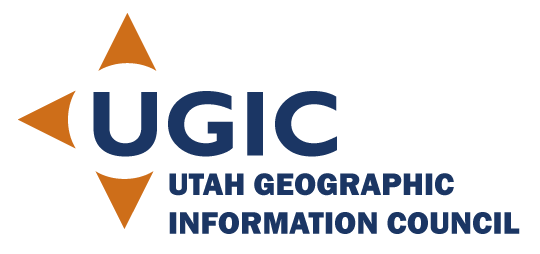Who is UGIC?
The Utah Geographic Information Council (UGIC) is a nonprofit organization whose mission is to lead the effective application of geographic information in Utah. Our membership includes individuals from all levels of government, private industry, educational institutions and other nonprofit groups. Through our membership and elected board of directors, we strive to make a real difference in Utah GIS – both for those who use it and those who benefit from it.
We encourage participation from all skill levels and backgrounds. The only requirement is a desire to share your passion for GIS.
UGIC held its first statewide GIS conference in 1991 and annual GIS conferences starting in 1997.
UGIC also helps support the continuing education of GIS in schools by helping and sponsoring various GIS Day events throughout the state.
Mission Statement
Lead, Mobilize, and Engage the Users of Geospatial Technology and Mapping Enthusiasts in Utah
Why Get Involved with UGIC?
Top 10 reasons for joining UGIC:
- Being part of a professional association is a critical part of your own career development.
- Learn about spatial information technologies through regular conferences and meetings.
- Influence technical standards that affect you and your organization.
- Network and socialize with others who share your interests in GIS and land information in Utah.
- Volunteering to support your profession by serving on committees and helping with GIS Day is a satisfying and rewarding experience.
- Access past conference materials, presentations, news, standards and much more on the UGIC Web site.
- Think beyond yourself and become a leader in your field
- Find solutions and have fun.
- Stay current with emerging GIS technology and the latest in application development.
- Without members, UGIC ceases to exist. No more annual conference, no GIS Day events, no advocacy at the state level. In short, joining UGIC is the right thing to do.
What is GIS?
A geographic information system (GIS) is a system designed to capture, store, manipulate, analyze, manage, and present spatial or geographic data. GIS applications are tools that allow users to create interactive queries (user-created searches), analyze spatial information, edit data in maps, and present the results of all these operations.
GIS can refer to a number of different technologies, processes, and methods. It is attached to many operations and has many applications related to engineering, planning, management, transport/logistics, insurance, telecommunications, and business. For that reason, GIS and location intelligence applications can be the foundation for many location-enabled services that rely on analysis and visualization.
GIS can relate unrelated information by using location as the key index variable. Locations or extents in the Earth space–time may be recorded as dates/times of occurrence, and x, y, and z coordinates representing, longitude, latitude, and elevation, respectively. All Earth-based spatial–temporal location and extent references should be relatable to one another and ultimately to a “real” physical location or extent. This key characteristic of GIS has begun to open new avenues of scientific inquiry.
Contact
UGIC Mailing Address:
Utah Geographic Information Council
P.O. Box 271008
Salt Lake City, UT 84127
Email: ugic.utah@gmail.com
Facebook: UGIC
Twitter: @ugicutah
UGIC Federal Tax #71-0868561
Completed W-9 Form
